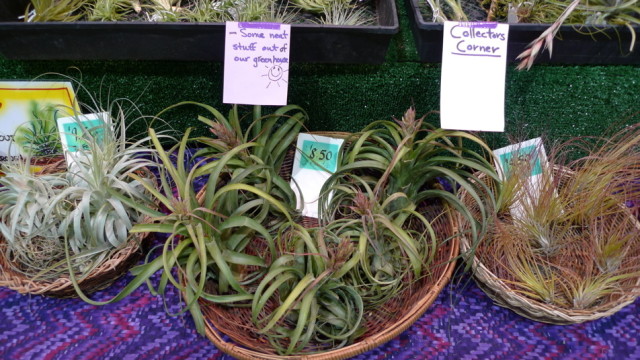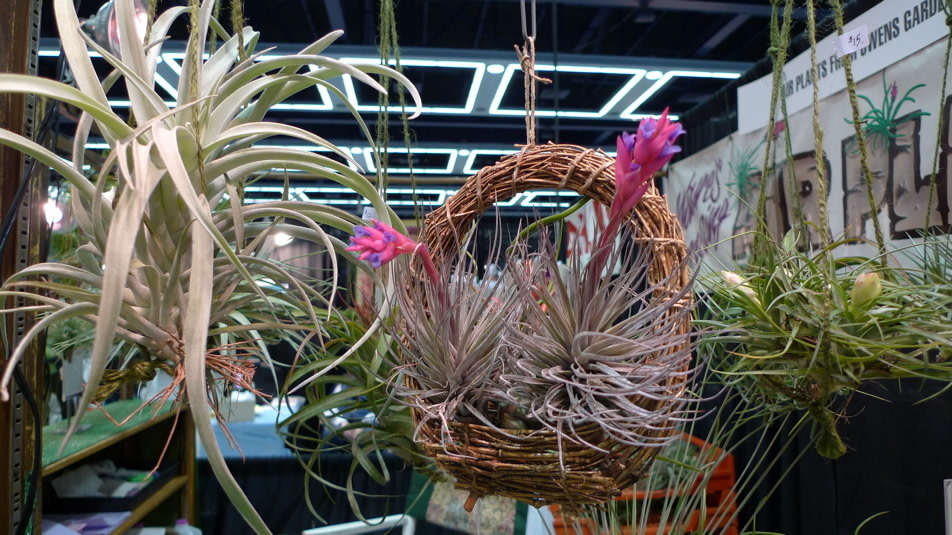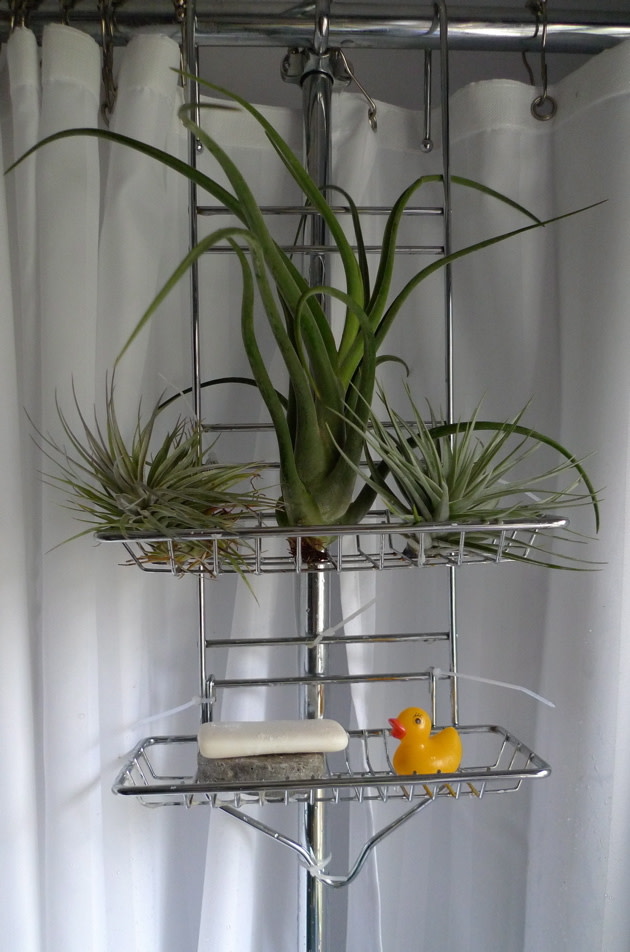Air Plants

I spied these unusual air plants (Tillandsia ) at the Seattle garden show and made a bee-line for them. Turns out the grower, Owens Gardens from Monroe, WA was at Portland’s Yard, Garden & Patio Show, too.
Tillandias are made up of spidery green to gray rosettes of foliage that can be fine and grassy, spidery and twisted or thick and fleshy like a succulent. Blossoms emerge in flattened bracts that range in color from pale pink or lavender to orange or sizzling hot pink, sometimes with contrasting blue and violet flowers at the tips.

Air plants come by their name because they do not root themselves in soil. Instead, they attach themselves to rocks, trees and sometimes, in urban areas, buildings and phone lines. From these positions, they draw the moisture and nutrients they need from rain, runoff and ambient humidity using tiny hairs growing on their leaves. Air plants are tropical and subtropical "epiphytes" and most come from Central and South America. If you’ve been to the Southern US, you’ve probably seen another type of air plant, Spanish moss (Tillandsia usneoides) trailing from the branches of evergreen oak trees. Air plants’ roots exist solely to anchor them to rocks and trees.

Hopefully this spot will provide all the bright light, good air circulation and humidity these plants need. Tillandsia medusae (center), Tillandsia aeranthos (on right) and Tillandsia stricta (on left)
Caring for these odd little treasures is easy. They require bright, indirect light (no blasting afternoon sun). And they need to be drenched with a squirt-bottle 1-3 times per week (depending on ambient humidity and heat). If you fertilize them 1-2 times per month in spring and summer with 1/4 strength, high phosphorus fertilizer, you should be rewarded with flowers. Since they are tender, they should be protected from frost. While they live indoors all winter, they do appreciate summer vacation outdoors. Just drench them with a hose a few times a week.
I’ve seen them in shops, artfully nestled into beautiful shells and wee baskets, affixed to stones or pieces of pottery, and tucked into small glass terrariums. (This latter idea isn’t so good for very long, as they do require brisk air circulation.) But I just settled mine in the shower caddy in my sunny bathroom next to a window. It required no effort on my part to set up and I get to regularly admire them up close and personal. All I need to do is douse them with water (cold, of course!) a couple of times a week and give them fertilizer a couple of times a month in winter. Easy!
Owens Tillandsia Nursery doesn’t have an online store but they do sell directly at garden shows and plant sales. Call them at 360-794-6422 for more information. Locally, try Artemisia Garden Nursery and PIstils Nursery.
